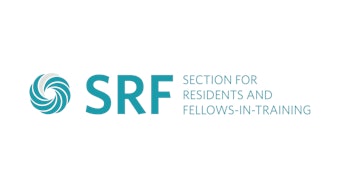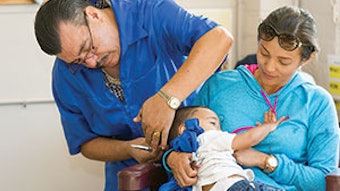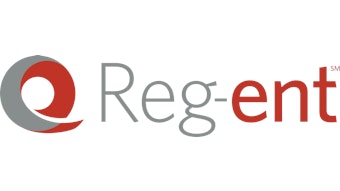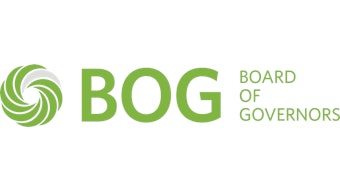Proposed CY 2017 Medicare Physician Fee Schedule (MPFS): What you need to know
On July 8, the Centers for Medicare & Medicaid Services (CMS) posted the proposed Medicare physician fee schedule (MPFS) for calendar year (CY) 2017. The Academy submitted comments to CMS on the proposed rule on September 6, and has also developed a Member summary, which details the important proposed requirements.
Academy addresses CMS proposed rule for 2017

Practice expense
CMS noted that during routine reviews of direct practice expense input recommendations, they have regularly found unexplained inconsistencies involving the use of scopes and the video systems associated with them. Some of the scopes include video systems bundled into the equipment item, some of them include scope accessories as part of their price, and some of them are stand-alone scopes with no other equipment included. To promote appropriate relativity among the services and facilitate the transparency of their review process, CMS developed a structure that separates the scope and the associated video system as distinct equipment items for each code. Under this approach, CMS proposes stand-alone prices for each scope, and separate prices for the video systems used with scopes. CMS also proposed standardizing refinements to the way scopes have been defined in the direct PE input database.
These proposed changes applied to the codes in the Flexible Laryngoscopy family (CPT codes 31575, 31576, 31577, 31578, 315X1, 315X2, 315X3, 31579) and the Laryngoplasty family (CPT codes 31580, 31584, 31587, 315Y1, 315Y2, 315Y3, 315Y4, 315Y5, 315Y6) along with updated prices for the equipment items related to scopes utilized by these services. In response to the CMS proposals, the Academy strongly urged CMS to consider the single item prices used in the invoices submitted following the January 2016 AMA/Specialty Society Relative Value Scale Update Committee (RUC) meeting for the standard endoscope equipment. Additionally, in the event CMS wishes to create endoscopic packages in the future, we urged them to create the packages through the AMA RUC Practice Expense Subcommittee process and to include all impacted specialties to ensure accuracy and comprehensive input.
Global surgical data collection requirements
Within the 2015 proposed fee schedule, CMS proposed a major change to reporting global surgical procedures by suggesting a two-year transition of all 010 and 090 global services to a 000 global designation. CMS finalized this proposal within the final 2015 MPFS rule. However, the Medicare Access and CHIP Reauthorization Act of 2015 (MACRA) prohibited the Secretary from implementing this policy. Instead, the MACRA required CMS to develop a process to gather information needed to value surgical services from a representative sample of physicians, and requires that the data collection shall begin no later than January 1, 2017.
In the proposed rule, CMS proposes a three-pronged approach to collect timely and accurate data on the frequency of, and input involved in furnishing, global services. This includes:
- The creation of a new G-code, reported in 10-minute increments, for comprehensive claims-based reporting about the number and level of pre- and post-operative visits furnished for all 010 and 090 global services by all clinicians,
- A survey of a representative sample of practitioners about the activities involved in and the resources used in providing, a number of pre- and post-operative visits during a specified recent period of time, such as two weeks, and
- A more in-depth study, including direct observation of the pre- and post-operative care delivered in a small number of sites, including some ACOs.
In comments submitted to CMS, the Academy strongly disagreed with CMS’ proposal, instead requesting CMS honor congressional intent and create a representative sample of surgical services using the following criteria: Medicare volume of at least 10,000; and/or $10 million in allowed charges; and at least 100 separate physicians performed the procedure. In comments, we also put forth the recommendation to use CPT code 99024 Postoperative follow-up visit, normally included in the surgical package, to indicate that an evaluation and management service was performed during a postoperative period for a reason(s) related to the original procedure once per visit to identify the number of postoperative visits associated with a surgical procedure.
Appropriate Use Criteria (AUC) for advanced diagnostic imaging requirements
In the proposed rule, CMS provides details on requirements and processes for specification of qualified clinical decision support mechanisms (CDSMs) under the Medicare AUC program; the initial list of priority clinical areas; and exceptions to the requirement that ordering professionals consult specified applicable AUC, when ordering applicable imaging services.
CMS notes that for this program, AUC are a set of individual appropriate use criteria and each individual criterion is an evidence-based guideline for a particular clinical scenario. CDSMs are the access point for ordering professionals to consult AUC to assist during patient workup, treatment and follow-up. CDSMs could both ensure integration of patient-specific data from electronic health records (EHRs), and allow clinicians to optimize the time spent using the tool. Imaging would be included in the clinical management decision tree and the ordering clinician would receive immediate feedback on the appropriateness of one or more imaging services.
In comments submitted to CMS, the Academy urged CMS to require EHR vendors to incorporate a CDSM for AUC into individual vendor EHRs as most physician practices do not have the resources or relevant experience to meet these requirements on their own. Additionally, we called for the development of a testing framework for CDSMs that includes mandated interoperability to ensure that AUC are incorporated across CDSMs and that physicians have access to the AUC. Finally, the Academy is concerned that the implementation of the Medicare AUC program is moving too quickly to satisfy the reporting requirement and agree with CMS’ sentiment expressed in the proposed rule that the accelerated timeframe could inadvertently result in technical and operational problems that could cause delays in payments.
Updates to the Value-based Modifier (VM) and physician feedback programs
In the proposed rule, CMS states if a third-party vendor or CMS made an error in EP or a group’s Value-based Payment Modifier (VM) calculation, the TIN would be classified as “average quality,” or if time allows, would have the score recalculated. CMS states recalculating the quality composite score is not always practical or possible. The Academy expressed serious reservations about CMS’ ability to ensure VM calculations and the subsequent payment modifications are correct with a high degree of certainty. Until CMS can ensure correct calculations, the Academy asked CMS to work to refine the VM calculation process to ensure costly VM calculation errors are limited, rather than placing the onus on clinicians to determine if an error has been made on their VM calculation and file for an informal review.
Finally, starting in 2019, CMS will roll the VM into the composite performance score (CPS) as part of the Merit-based Incentive Payment System (MIPS). CMS’ admission of continued issues calculating performance scores through the VM underscores comments the Academy submitted to CMS for the MIPS and Alternative Payment Model (APM) proposed rule, where we stated “we are concerned that the issues experienced with the VM program will be rolled over to the new Resource Use Performance Category without clarification prior to implementation and we urge CMS to fully address the previously raised issues within the final rule.” The Academy continues to remain concerned that components of the VM program will roll into the calculation for clinicians’ CPS and could adversely affect reimbursement.










